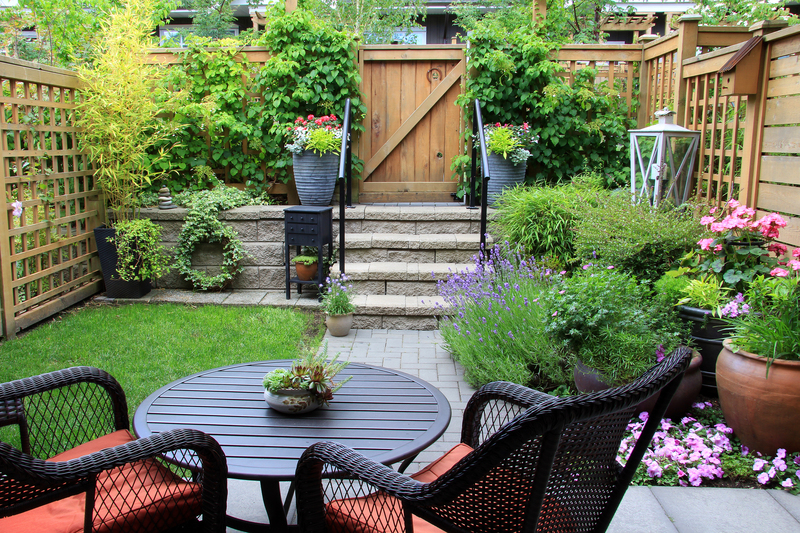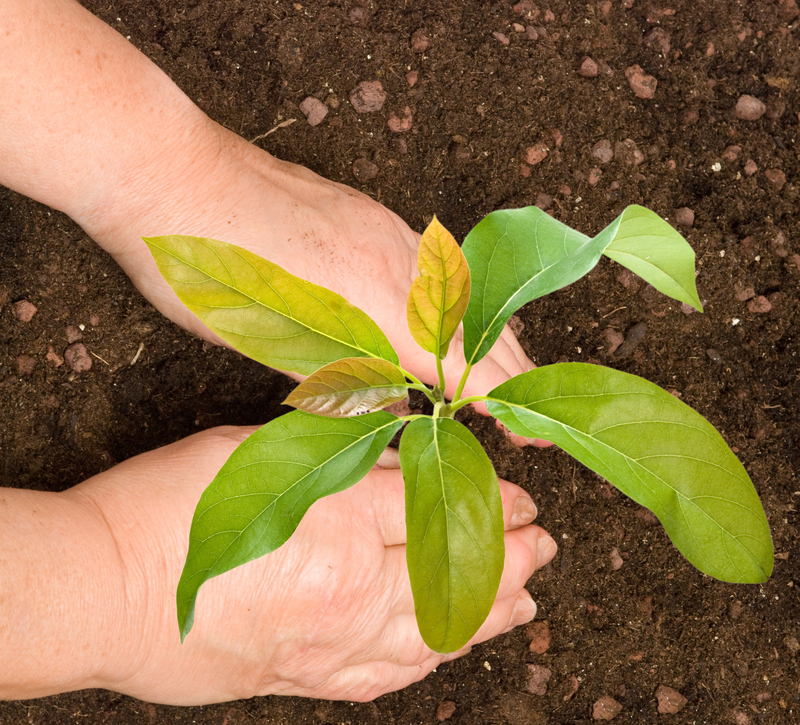Garden Guardianship: Essential Steps for Winter Plant Care
Posted on 04/06/2025
Garden Guardianship: Essential Steps for Winter Plant Care
Winter brings unique challenges to every gardener, turning your beloved green sanctuary into a battleground against frost, cold winds, and unpredictable weather. Stepping up as a guardian of your garden during these frosty months is crucial for the survival and future thriving of your plants. This comprehensive guide discusses all the essential steps for winter plant care, ensuring you master every aspect of garden guardianship and keep your landscape healthy all season long.
Why Winter Garden Guardianship Matters
Winter may bring a dormant look to gardens, but below the surface, crucial life processes continue. Cold, wind, and reduced daylight hours challenge plant resilience. If unprepared, your garden risks suffering from frost damage, dehydration, and disease. By embracing essential winter plant care tasks, you solidify your role as a garden guardian, giving your plants the best opportunity to thrive once spring returns.
Benefits of Proper Winter Plant Care
- Reduces plant loss due to cold, pests, and disease
- Prepares perennials and shrubs for vigorous spring growth
- Keeps your garden landscape beautiful and healthy year-round
- Protects soil structure and fertility

Understanding Your Plants' Winter Needs
Plants differ in their cold resistance--what helps one species survive winter may harm another. Assessing your garden helps you deliver specific, effective care.
Know Your Hardiness Zone
The USDA Plant Hardiness Zone Map divides regions based on minimum winter temperatures. Understanding your zone ensures that you choose plants that can withstand your area's lowest temperatures and informs your protective measures.
- Find your hardiness zone using official resources
- Check each plant's cold tolerance using labels or online plant databases
- Group similar plants for efficient winter care routines
Assessing Vulnerable Plants
Some plants need extra protection every winter. Watch out for:
- Young transplants and saplings
- Tender perennials not rated for your zone
- Evergreen shrubs exposed to wind and sunshine
- Container-grown plants--these roots freeze faster
- Plants with shallow roots or exposed crowns
Preparing the Garden for Dormancy
Garden guardianship begins before winter's harshest weather arrives. The steps you take in late autumn can determine your garden's fate.
Clean Up Debris and Dead Foliage
- Remove fallen leaves, dead annuals, and plant debris to minimize pests and disease overwintering.
- Compost healthy plant material but discard anything diseased.
- Leave some seedheads for birds and beneficial insects.
Pruning for Winter Health
Pruning is a balancing act: Some plants benefit from a pre-winter haircut, while others are better pruned in spring.
- Prune dead, damaged, or diseased wood.
- Remove weak branches on trees and shrubs that could break under snow.
- Avoid pruning spring-blooming shrubs (like lilacs or forsythia) in fall, or you'll cut off next year's blooms.
Mulching: The Garden Guardian's Shield
Mulch acts as insulation, keeping soil temperatures steady and roots protected from freeze-thaw cycles.
- Apply 2-4 inches of organic mulch (leaves, straw, wood chips) around plants after the first hard freeze but before the coldest weather.
- Do not allow mulch to touch tree trunks or shrub stems --this can encourage rot.
- Mulch will also suppress winter and early spring weeds.
Watering Wisely--Even in Cold Weather
Dehydration poses a serious threat during winter, especially when rainfall is low or soil is frozen.
Tips for Proper Winter Watering
- Water thoroughly before the ground freezes--especially for new plantings and evergreens.
- Water during dry winter spells on milder days when soil isn't frozen.
- Morning watering is best to prevent overnight ice formation.
Did you know? Cold winds and sunshine can sap moisture from evergreen leaves and needles--one reason why evergreens can struggle in winter.
Shielding Plants from Frost and Snow
As a winter garden guardian, your job is to minimize cold-related plant stress.
Frost Protection Strategies
- Cover garden beds or delicate plants with burlap, horticultural fleece, or old sheets on frosty nights. Remove covers during the day to avoid overheating.
- For tender shrubs or evergreens, create wind barriers using burlap screens or fencing.
- Move potted plants to sheltered spots or indoors if possible.
- Avoid plastic covers: They trap moisture and heat, possibly causing more damage.
Dealing with Snow and Ice Accumulation
- Gently brush heavy, wet snow off shrubs and small trees to prevent branch breakage.
- If ice coats plants, let it melt naturally--chipping or forcefully removing ice harms bark and buds.
- Avoid using salt deicers near gardens--these can leach into soil and cause plant injury.
Caring for Container and Indoor Plants During Winter
Container plants are especially vulnerable as their roots aren't insulated by the ground.
Outdoor Pots
- Group pots together for shared warmth and place against a south-facing wall for extra sun.
- Wrap containers with bubble wrap, burlap, or insulation to prevent rapid temperature swings.
- Raise containers on pot feet to prevent waterlogging and frozen roots.
Houseplants and Overwintering Tender Species
- Bring tenders indoors before first frost.
- Reduce watering and fertilizing to match winter dormancy needs.
- Watch for low humidity: Use pebble trays or humidifiers to prevent leaf drop.
- Keep away from radiators, drafty windows, and direct heat sources.
Encouraging Wildlife Allies and Biodiversity
True garden guardianship doesn't end with plants; it includes nurturing pollinators, birds, and soil health during winter.
- Leave some seedheads, grasses, and leaf litter for sheltering insects and birds.
- Install bird feeders and baths and keep them clean and filled through winter.
- Add roosting boxes or brush piles in corners to offer warmth and refuge to small wildlife.
Healthy ecosystems create resilient gardens!
Common Winter Plant Issues and Solutions
Even with diligent winter plant care, surprises may arise. Here's how to handle typical cold-weather challenges:
Winter Burn in Evergreens
Caused by frozen roots and moisture loss from foliage. Prevention: Water in autumn, mulch well, and use wind screens where needed.
Frost Cracks & Sunscald on Trees
Rapid temperature changes can split bark on young trees. Solution: Wrap trunks with tree guards or white tree wrap through winter.
Root Rot from Poor Drainage
Waterlogged soils are deadly when combined with freezing. Enhance drainage by amending soil and using raised beds for sensitive plants.
Rodent Damage
Mice and voles nibble bark under snow. Use hardware cloth collars around tree bases and clear tall grass away.
Winter Garden Care: A Month-by-Month Guide
Staying proactive with winter garden maintenance ensures that every essential step is completed at the right time.
- Late Autumn:
- Clean up debris and mulch garden beds
- Prune dead or diseased wood
- Give a final deep watering
- Move and insulate pots
- Early Winter:
- Install windbreaks and winter protection
- Check for animal damage
- Refill bird feeders and baths
- Mid-Winter:
- Monitor for snow/ice buildup, brush off when needed
- Water on mild days if dry
- Renew mulch disturbed by wind or wildlife
- Late Winter:
- Plan for early indoor seed sowing
- Check overwintered bulbs for rot
- Prune fruit trees and some shrubs before sap rises
Frequently Asked Questions on Garden Guardianship in Winter
How deeply should I mulch for winter?
Use a 2-4 inch layer. For extra-tender perennials or bulbs, up to 6 inches is okay, but remove some in early spring to prevent rot.
Should I fertilize my garden in winter?
No--most plants are dormant and can't use nutrients. Over-fertilizing can harm roots. Wait until spring.
Is it necessary to water in winter if the ground is frozen?
If the ground is frozen solid, water can't reach roots. On milder winter days when the soil is soft, give plants a good soak if it's dry.
Can indoor plants go outside in winter sun?
Most indoor plants should stay inside during cold months, as temperature swings and cold air harm them. Place them near bright windows inside.

Garden Guardianship: Sustaining Success Year After Year
Gardening is a year-round commitment. The efforts you make as a winter guardian directly shape your garden's vitality and lushness for the seasons ahead. From thorough preparation and routine protection to fostering biodiversity, every task adds a protective layer--ensuring your landscape awakens healthy and vigorous in spring.
Remember:
- Stay observant--catch problems early
- Adjust your care routine for your region and specific plant needs
- Embrace nature: A little wildness is good for garden ecosystems.
Conclusion: Embrace Your Role as a Winter Garden Guardian
By implementing these essential steps for winter plant care, you become a true guardian of your garden. Preparation, protection, and ongoing observation are the pillars of winter garden guardianship. Defend your plants from cold and wind, foster healthy soil, encourage backyard biodiversity, and your garden will thank you with thriving growth and color as the warmer months return.
Step out, be vigilant, and enjoy the peace of mind that comes from being your garden's trusted winter guardian!

